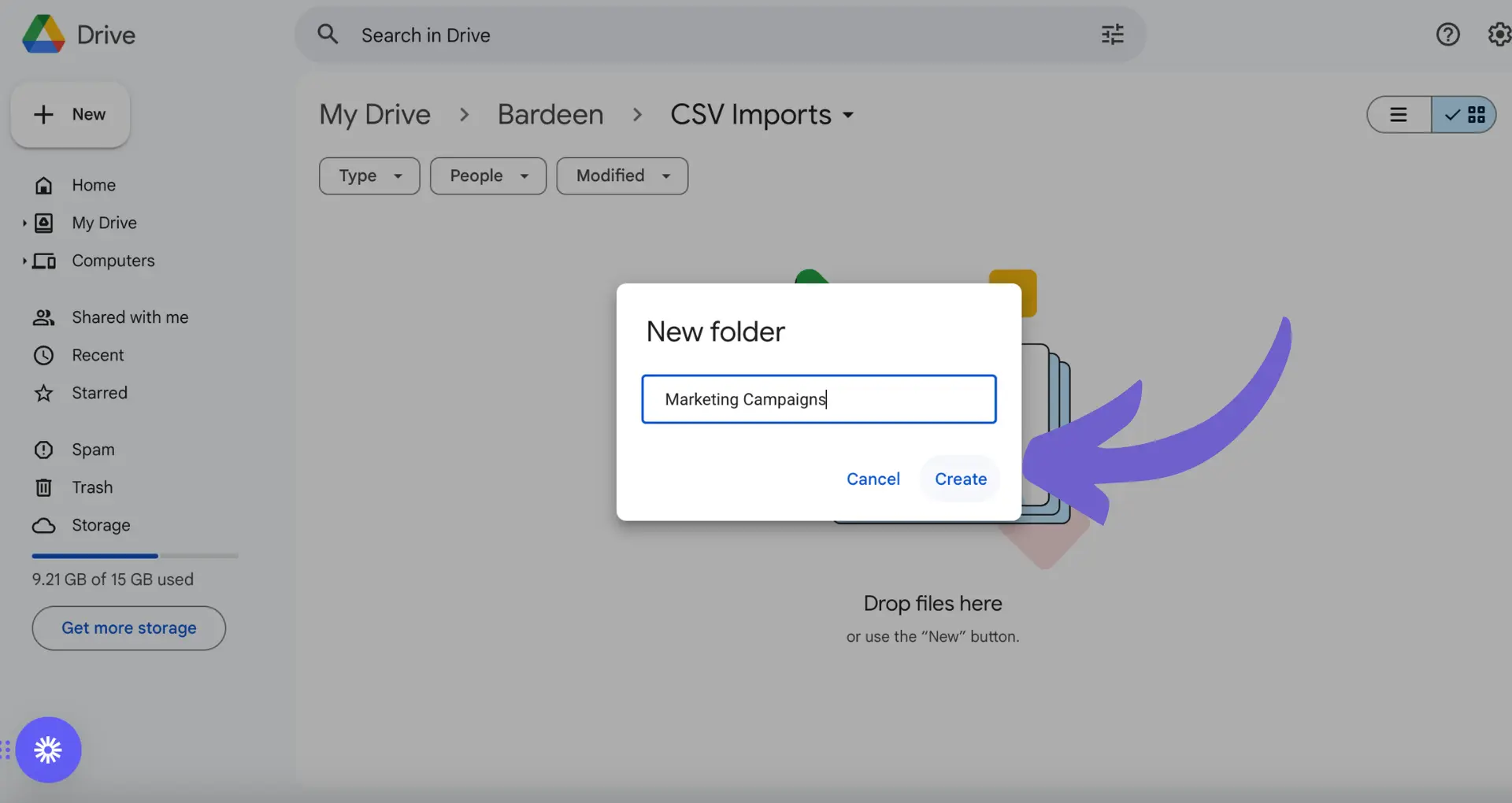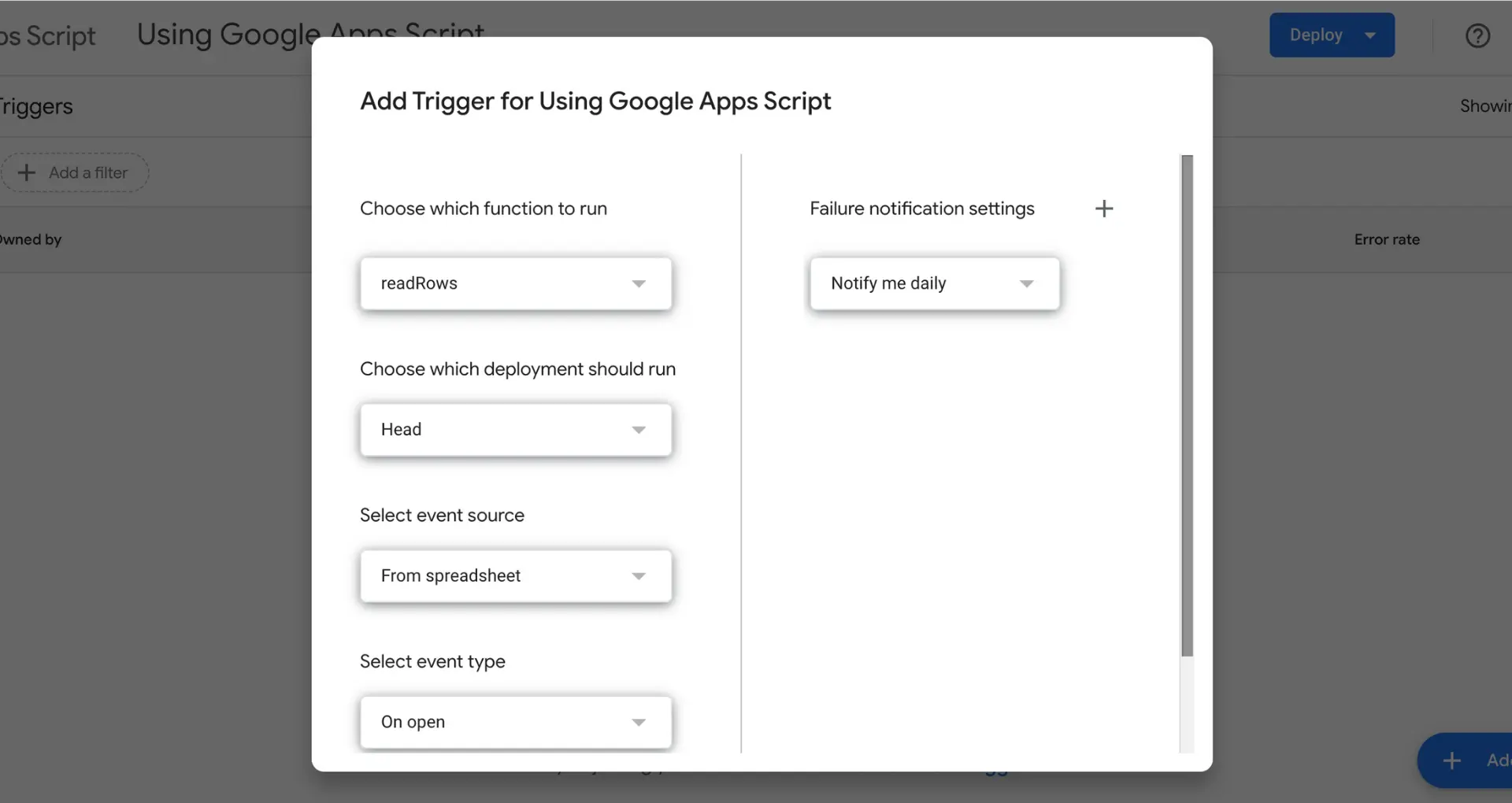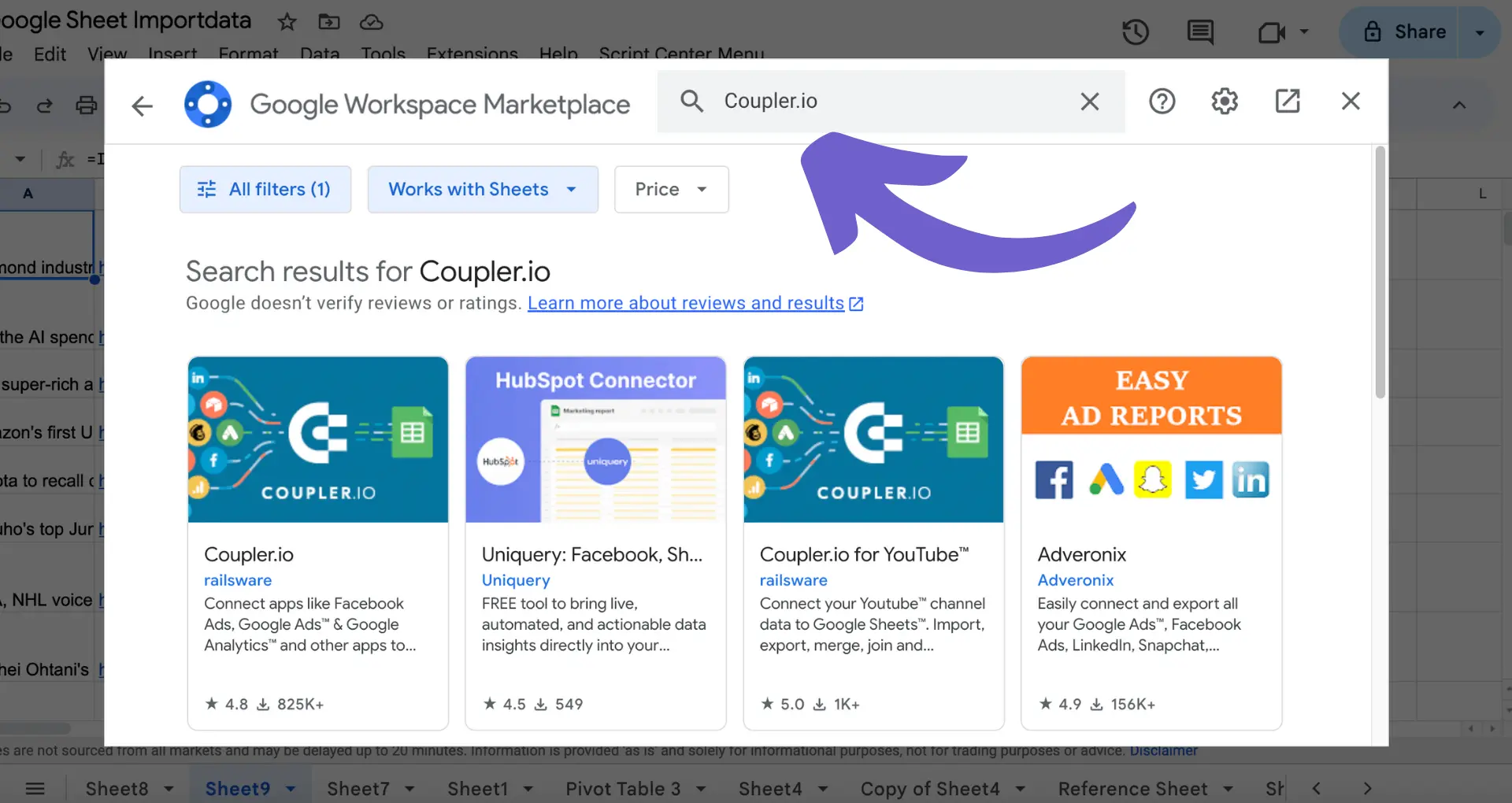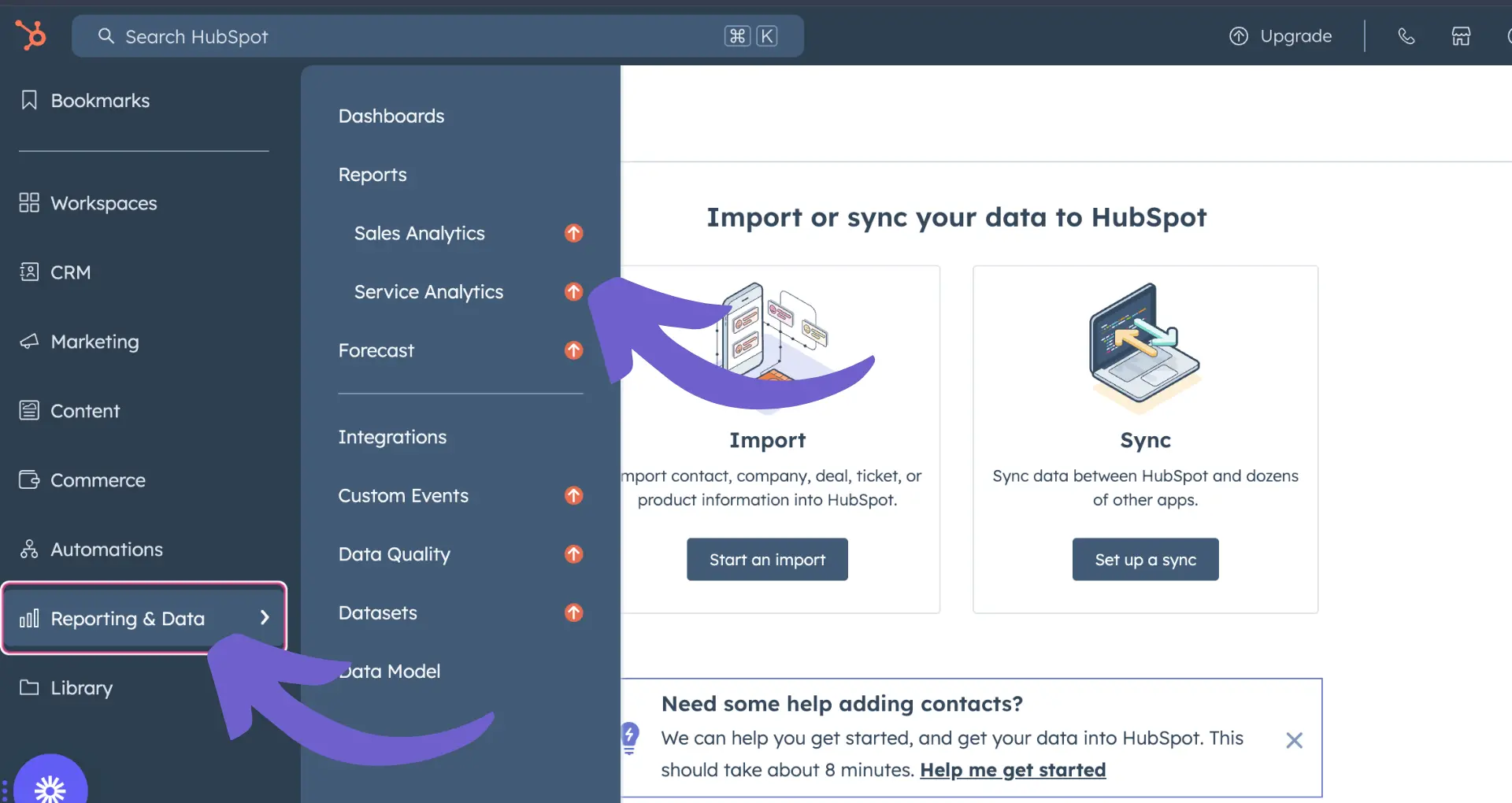





Import multiple CSV files into Google Sheets efficiently with Apps Script.
By the way, we're Bardeen, we build a free AI Agent for doing repetitive tasks.
Since you're importing CSV files, you might love Bardeen's integration with Google Sheets. It automates CSV imports and other tasks, saving you time and effort.
Importing multiple CSV files into Google Sheets can be a time-consuming and repetitive task. However, with the right tools and techniques, you can streamline this process and save valuable time. In this step-by-step guide, we'll show you how to efficiently import multiple CSV files into Google Sheets, automate the process using Google Apps Script, and ensure data consistency across your spreadsheets.
CSV (Comma-Separated Values) files are a simple and widely-used format for storing and transferring tabular data. They are plain text files where each line represents a record, and fields within records are separated by commas. This structure makes CSV files compatible with many spreadsheet applications, including Google Sheets.
Google Sheets is a web-based spreadsheet application that allows you to create, edit, and collaborate on spreadsheets. It supports various data types, such as:
When you import a CSV file into Google Sheets, the data is automatically separated into cells based on the comma delimiters. This makes it easy to view, manipulate, and analyze your data using the powerful features of Google Sheets. For advanced analysis, you can bring AI into your spreadsheet with tools like GPT for Google Sheets.
Organizing your CSV files in Google Drive is crucial for streamlined access and efficient data management. By creating a well-structured folder system, you can easily locate and manage multiple CSV files for importing into Google Sheets. Here's a step-by-step guide on how to set up your Google Drive for CSV imports:

By following these steps, you'll have a well-organized Google Drive structure for storing and managing your CSV files. This setup will make it easier to locate the files you need when it's time to import them into Google Sheets for further analysis and manipulation.
Save even more time by using Bardeen to integrate Google Drive with other apps. Automate your workflows and focus on more important tasks.
Google Apps Script is a powerful tool that allows you to automate tasks within Google Workspace, including Google Sheets. By leveraging Apps Script, you can scrape data from websites, import CSV files, and save time and effort.

Here's a basic script that demonstrates how to import CSV files from Google Drive into Google Sheets:
function importCSVFromDrive() { var fileName = "data.csv"; var files = DriveApp.getFilesByName(fileName); if (files.hasNext()) { var file = files.next(); var csvData = Utilities.parseCsv(file.getBlob().getDataAsString()); var sheet = SpreadsheetApp.getActiveSpreadsheet().getActiveSheet(); sheet.getRange(1, 1, csvData.length, csvData[0].length).setValues(csvData); } else { Logger.log("File not found: " + fileName); }}
Here's how the script works:
importCSVFromDrive() function is defined, which will be called to import the CSV file.fileName variable.DriveApp.getFilesByName().files.next().Utilities.parseCsv().SpreadsheetApp.getActiveSpreadsheet().getActiveSheet().sheet.getRange().setValues().Logger.log().By running this script, the specified CSV file will be automatically imported into the active Google Sheets spreadsheet. You can customize the script further to handle multiple files, specify the target sheet, or apply additional formatting to the imported data. For more advanced automation, consider adding AI to your spreadsheets.
Triggers in Google Apps Script allow you to automate tasks by running a function based on a specific event or schedule. Time-driven triggers are particularly useful for importing CSV files into Google Sheets at regular intervals.
To set up a time-driven trigger for importing CSV files:

Once the time-driven trigger is set up, the specified function will run automatically at the scheduled intervals. This means that your CSV files will be imported into Google Sheets on a regular basis without any manual intervention.
Keep in mind that time-driven triggers have some limitations:
By leveraging time-driven triggers, you can automate the process of importing CSV files into Google Sheets, ensuring that your data is always up to date and saving you valuable time and effort. For more advanced workflows, consider using tools that integrate Excel with other platforms.
Want to connect Microsoft Excel directly to your Google Sheets to automate imports? Try using Bardeen to save time on repetitive tasks.
When importing multiple CSV files into Google Sheets, it's crucial to ensure data consistency and prevent duplication. Here are some strategies to achieve this:
Here are some additional tips to maintain data consistency across multiple imports:
By following these strategies and tips, you can significantly reduce the risk of data inconsistency and duplication when importing multiple CSV files into Google Sheets. It's important to have a well-defined process and maintain discipline in data management to ensure the reliability and integrity of your data.
While Google Sheets provides a robust set of features for data management and analysis, third-party tools can further enhance its functionality and streamline the process of importing multiple CSV files. These tools offer additional capabilities and integrations that can save time and effort when working with large volumes of data from various sources.
Here are some popular third-party tools that can assist with importing multiple CSV files into Google Sheets:

Save time and automate repetitive tasks in Google Sheets with Bardeen's integrations. Connect Google Docs for seamless workflow automation.
When comparing the features and benefits of these tools, consider the following factors:
By leveraging third-party tools, you can enhance the functionality of Google Sheets and streamline the process of importing multiple CSV files. These tools can save time, reduce errors, and enable more advanced data management and analysis capabilities, ultimately improving your productivity and decision-making processes.
When managing large CSV imports and maintaining spreadsheet performance, it's essential to follow best practices and be prepared for potential issues. Here are some tips to ensure smooth and efficient CSV imports into Google Sheets:
Despite following best practices, you may still encounter issues during CSV imports. Here are some common troubleshooting steps:
By following best practices and knowing how to troubleshoot common issues, you can ensure that your CSV imports into Google Sheets are efficient, reliable, and error-free. This will help you maintain data integrity and make the most of your spreadsheet's capabilities for data analysis and management.







SOC 2 Type II, GDPR and CASA Tier 2 and 3 certified — so you can automate with confidence at any scale.
Bardeen is an automation and workflow platform designed to help GTM teams eliminate manual tasks and streamline processes. It connects and integrates with your favorite tools, enabling you to automate repetitive workflows, manage data across systems, and enhance collaboration.
Bardeen acts as a bridge to enhance and automate workflows. It can reduce your reliance on tools focused on data entry and CRM updating, lead generation and outreach, reporting and analytics, and communication and follow-ups.
Bardeen is ideal for GTM teams across various roles including Sales (SDRs, AEs), Customer Success (CSMs), Revenue Operations, Sales Engineering, and Sales Leadership.
Bardeen integrates broadly with CRMs, communication platforms, lead generation tools, project and task management tools, and customer success tools. These integrations connect workflows and ensure data flows smoothly across systems.
Bardeen supports a wide variety of use cases across different teams, such as:
Sales: Automating lead discovery, enrichment and outreach sequences. Tracking account activity and nurturing target accounts.
Customer Success: Preparing for customer meetings, analyzing engagement metrics, and managing renewals.
Revenue Operations: Monitoring lead status, ensuring data accuracy, and generating detailed activity summaries.
Sales Leadership: Creating competitive analysis reports, monitoring pipeline health, and generating daily/weekly team performance summaries.


